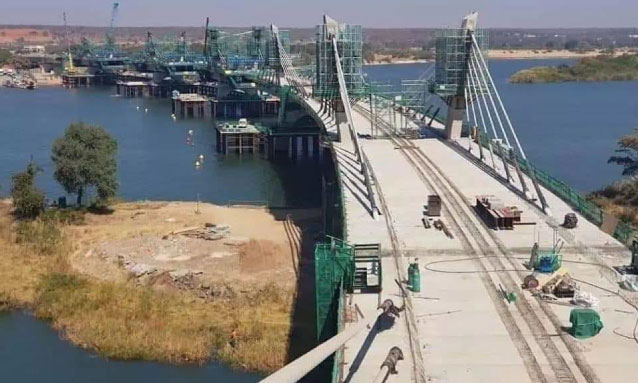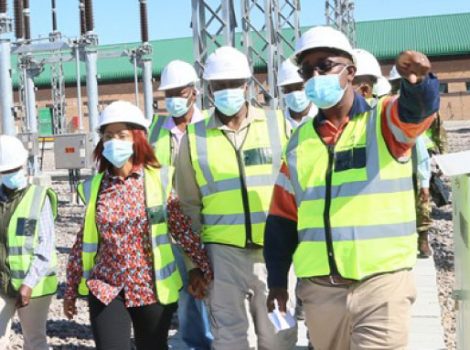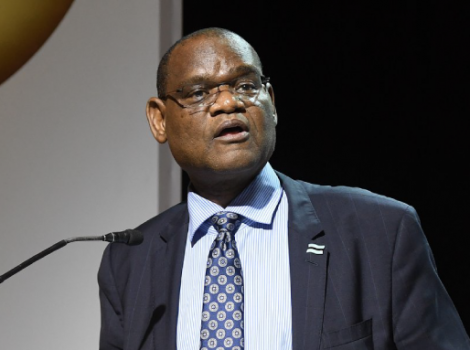
Daewoo E&C said on October 8 that it has received a taking-over certificate from the Botswana and Zambian governments on September 5, along with a certificate of 10 million accident-free hours.
The bridge is the first extradosed bridge construction project that Daewoo E&C has won overseas in 2014. Kazungula Bridge is a 923-meter-long, 18.5-meter-wide extradosed bridge with a 687-meter-long access road and a 2,170-meter-long single-track railway. The bridge is expected to improve the transportation and logistics infrastructure around the region.
As Kazungula Bridge links to a railway and a road, its safety significantly matters. Therefore, an extradosed bridge model was applied in its construction as it can widen distances between piers and has the advantage of vibration control. An extradosed bridge is one where a girder-reinforcing cable is attached to the main tower as is the case with a cable-stayed bridge. The exterior of an extradosed bridge looks like a cable-stayed bridge. But the height of its tower is lower than that of a cable-stayed bridge, so the cable plays a relatively small role in buttressing the upper layer of the bridge. Therefore, the upper layer has to be designed to be stronger.
An extradosed bridge is structurally superior to a cable-stayed bridge as a railway bridge. Kazungula Bridge has six main towers standing in a row, providing for stunning views. With this in mind, the bridge is expected to become a landmark in the region.
Project General Description
The Kazungula Bridge Project (KBP) is a multi-national project on the North-South Corridor (NSC) within the SADC region and part of a corridor-long infrastructure improvement programme. The project scope includes a bridge linking Botswana and Zambia over the Zambezi River to replace the existing ferry and juxtaposed one-stop border facilities at Kazungula. The estimated total project cost is UA 162.06 million (approximately USD 259.3 million) funded through a co-financing arrangement with JICA. The Bank covers from the ADF window UA 51.00 million, equivalent to 31.5% of the total project cost. The balance is shared between JICA (57.5%), Governments (9.2%) and EU-ITF Grant (1.8%). The project implementation period is five (5) years.
Project Objectives
The project’s development objective is to improve the efficiency of transit traffic through the Kazungula border to facilitate and increase trade activities and global competitiveness of Zambia and Botswana; improve regional connectivity of the North-South Corridor; and contribute to economic regional integration within the SADC region.
The expected outcomes include: (i) reduced border transit time; (ii) improved procedures on trade facilitation; (iii) improved border management operations, and consequently (iv) increased traffic throughput and (v) reduced time-based transport and trade cost. The direct beneficiaries are sections of population and businesses engaged in the mining, agricultural and service sectors contributing to 60-80% of the region’s GDP. Expected benefits are increased opportunities for intra and extra regional trade activities, regional economic integration along the corridor and job creation.
The project was initially slated to be completed by March 2019 but faltered due to delayed payments. On March 18, 2019, the contractor gave formal notice of the suspension of works on the main aspect of the bridge.The action primarily affected Package 1; being the bridge itself, and extension delays in dealing with Package 1 adversely affecting Packages 2 and 3; being the One-Stop Border Posts in Botswana and Zambia.
The Bridge is regarded as very important to Botswana’s economic ambitions to transport goods into central Africa. The country is set to construct a railway line between Mosetse and Kazungula villages, which will connect the Central African region to maritime ports in South Africa through Botswana. This will also be an opportunity for the tourism industry as an alternative transport mode for agricultural products from Pandamatenga farms in Botswana. The Mosetse Kazungula rail link serves as key to Botswana Railways growth strategy.
Source: http://www.businesskorea.co.kr/news/articleView.html?idxno=52924 & http://projectsportal.afdb.org/dataportal/VProject/show/P-Z1-DB0-031



